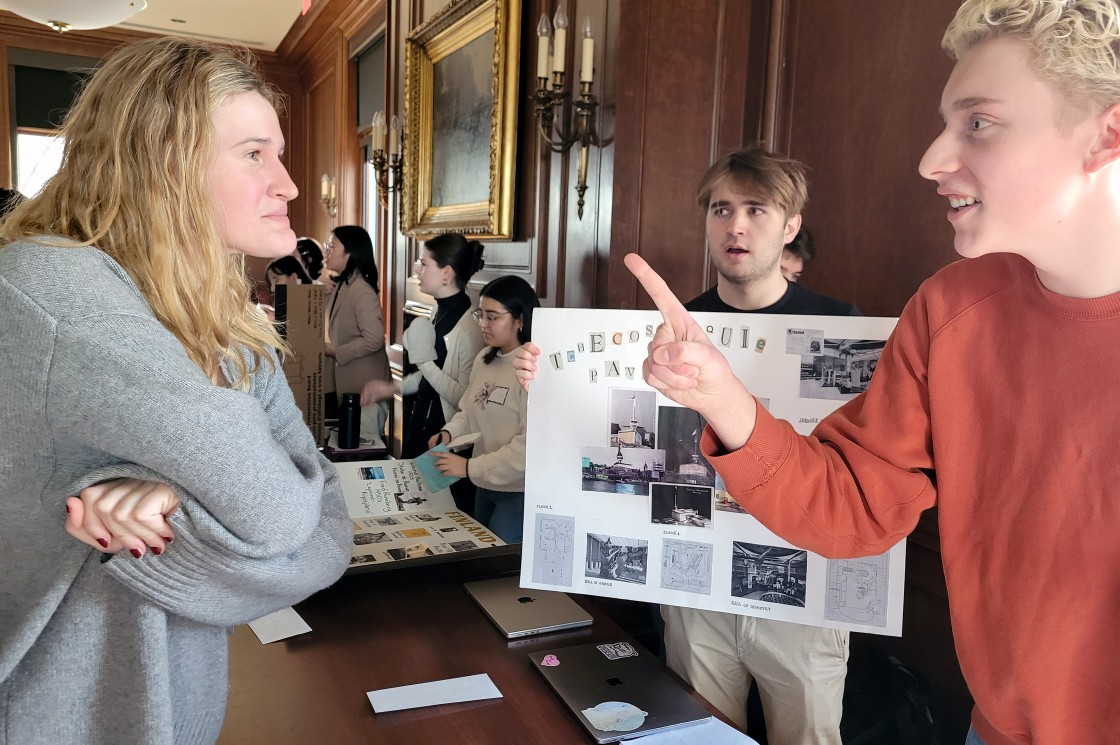Students with berets, red lipstick, alpine hats and walking sticks filled Harris Hall on a February morning, conversing energetically, sometimes waving handkerchiefs or canes to emphasize their points with theatrical flair.
You might wonder if you’d wandered into a Paris café between the world wars. And you’d be close.
Students from Adrienn Kácsor’s Survey of Global Modernisms class put into practice research on 25 national pavilions featured in the 1937 Paris Expo. Often speaking extemporaneously from a historical figure’s point of view, they debated the virtues and shortcomings of popular forms of painting, sculpture and architecture the exhibitors selected to showcase the modernity of various countries.
A panel of distinguished judges, including Alfred Granet, the architect-designer of the Eiffel Tower’s 1937 fluorescent illuminations — as portrayed by Professor Emerita S. Hollis Clayson of the Weinberg College of Arts and Sciences — traversed the room interviewing pavilion hosts. Students playing a range of character archetypes also visited the pavilions to opine on the merits of the art and technology on view.


